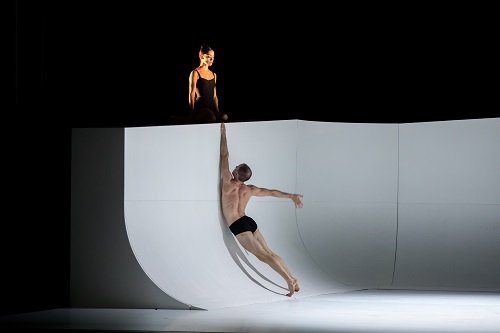 United Kingdom Stravinsky: Dancers and Orchestra of Scottish Ballet / Jean-Claude Picard (conductor), Edinburgh Festival Theatre, 11.10.2017. (SRT)
United Kingdom Stravinsky: Dancers and Orchestra of Scottish Ballet / Jean-Claude Picard (conductor), Edinburgh Festival Theatre, 11.10.2017. (SRT)

The Fairy’s Kiss
Cast:
Young Man – Andrew Peasgood
Fiancée – Bethany Kingsley-Garner
Fairy – Constance Devernay
Production:
Choreography – Sir Kenneth MacMillan
Designer – Gary Harris
Lighting – Simon Bennison
The Rite of Spring
Cast:
Older Brother – Christopher Harrison
Younger Brother – Constant Vigier
Faith/Death – Sophie Martin
Production:
Choreography – Christopher Hampson
Designers – Christopher Hampson & Robert Hand
Lighting – George Thomson
Stravinsky may be the unifier for this double bill, but otherwise the two works have little in common. So typically for this chameleon among composers, The Fairy’s Kiss is a winsome wave backwards to a glorious past – in this case that of Tchaikovsky – while The Rite of Spring defiantly throws open the doors to a brand new future of both music and theatre.
It’s The Rite that’s the more compelling in this pairing; for me, by quite some way. Gone is any suggestion of pagan Russia in Christopher Hampson’s retelling. Instead we have two brothers dancing in what seems like a hermetically sealed space, set apart from the outside world. Hampson’s sensitive choreography tell us a lot with some clever gestures, such as the downward swoops that show us that this is a controlling relationship with the elder (Christopher Harrison) in charge, or the way the pair mirror each other to show the younger’s subservience. Into this world comes a woman – Sophie Martin as Faith in the first part, Death in the second – who threatens and then disrupts their sealed world, captivating the younger brother (Constant Vigier) but drawing resistance from the elder. Hampson, therefore, turns the work from a public propitiation into a deep, introverted study of power and control. There are losses: reducing the work to a cast of only three can’t avoid lessening the visual scale, and the second half revolves around a series of torture scenes, which means that the composer’s screaming dissonances become much like one another when put to that use. I found it very involving on the whole, however, and there’s a small but wonderful coup de theatre in the final seconds that gives the ending an extra punch.
Next to this visceral rawness, The Fairy’s Kiss inevitably feels pretty tame. That’s not to say that Kenneth MacMillan’s production shies away from the darkness of the tale: quite the opposite. His realisation of Stravinsky’s fairy is so dangerous because it is so alluring, contrasting her gleaming brightness with the down-to-earth everyday nature of the rustics, and her interaction with the young hero is remarkable to watch. Their series of duets becomes ever more involved and insidious, as she takes possession of his affections, resulting in some moves in which he effectively seems to finish her sentences. In particular, Andrew Peasgood and Constance Devernay had a lovely move where she begins a cartwheel and he helps her finish it, as though she has him wrapped around her little finger from the start. His dance with his fiancée is also lovely, but his interactions with the fairy are more sensuous, more alluring and, somehow, more right.
The orchestra bring both scores to life brilliantly, and the slightly dry acoustic of the Festival Theatre helped The Rite to throb with pulsing, animalistic energy in a way you sometimes miss in a more opulent concert hall. Jean-Claude Picard, formerly Assistant Conductor up the road with the RSNO, shaped a compelling Rite and a delicately coloured Kiss. Still, see this pairing for The Rite; treat The Fairy’s Kiss as a welcome bonus.
Scottish Ballet’s Stravinsky pairing continues in Edinburgh to Friday 13th October, then on tour to Aberdeen and Inverness.
Simon Thompson
For more about Scottish Ballet click here.